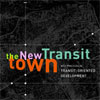Publications
Browse:
Climate | Energy | Water | Transportation & Community Development
Transportation & Community Development Publications
Displaying 61-70 of 81 citations.
By CNT, Virginia Tech. October 11, 2006This study examines neighborhood housing and transportation choices available to working households in U S metropolitan areas The purpose is to determine how constraints within the neighborhood and the region e g lack of access to transportation choices distance from job centers shortages of affordable housing affect household costs and…
http://www.cnt.org/repository/H-T-Tradeoffs-for-Working-Families-n-28-Metros-FULL.pdf (7,210.4kb) - Report
By CNT, Carrie Makarewicz. October 4, 2006Center for Transit Oriented Development
PowerPoint presentation outlining CNT's work on the Housing and Tranportation Affordability Index and how it works, who can use the tool, and the project timeline.
http://www.cnt.org/repository/Affordability-Index-APA-Midwest-4-State.ppt (4,807.0kb) - Presentation
By CNT. June 29, 2006Center for Transit Oriented Development
A presentation delivered to a gathering of regional leaders in Chicago to disucss ways to apply CNT's Affordability Index in the Chicago region.
http://www.cnt.org/repository/June_29_06.Final.pdf (1,596.8kb) - Presentation
By CNT, Center for Transit Oriented Development. February 1, 2006Reconnecting America
A brief published by the Brookings Institution Metropolitan Policy Program that describes the method behind the Affordability Index and the application of this tool in the Minneapolis-St. Paul region.
http://www.cnt.org/repository/AffordabilityIndexBrief.pdf (3,816.3kb) - Report
By CNT, Center for Clean Air Policy. January 1, 2006A corridor-by-corridor estimate of the potential annual greenhouse gas benefits -- from emissions reductions -- of high speed rail systems in the U.S. based on current plans for high speed rail development in the federally designated high speed rail corridors.
http://www.cnt.org/repository/HighSpeedRailEmissions.pdf (899.3kb) - Report
By CNT & Surface Transportation Policy Project. June 1, 2005Examines the impacts of transportation spending on households in the metro areas for which the federal government collects expenditure data and of rising gas prices on both households and regional economies Finds that households in regions that have invested in public transportation reap financial benefits from having access to affordable…
http://www.cnt.org/repository/Driven-to-Spend-2005.pdf (268.6kb) - Report
By City of Blue Island, CNT. June 1, 2005Smart Growth in Older Communities
Summary of the plan for Blue Island, which incorporates plans for residential and commercial redevelopment around the community's passenger rail stop and industrial redevelopment of the cargo and freight facilities.
http://www.cnt.org/repository/BlueIslandExecSummary.pdf (1,505.2kb) - Report
By CNT, Center for Transit Oriented Development. September 1, 2004A market study of all the transit stations in the US, showing that demand for compact housing near transit is likely to more than double by 2025. The study relies on the first ever national transit database of all existing and pending stations, over 3,000, categorized by type.
http://www.cnt.org/repository/Hidden-in-Plain-Sight.pdf (2,246.0kb) - Report
By CNT, Center for Transit Oriented Development. July 15, 2004Written comments about the proposed goal levels for the Underserved Areas Goal as set by HUD Comments argue that targets can be met and in certain areas increased a result of research that households living in areas well-served by frequent and extensive alternative modes of transportation have more disposable income…
http://www.cnt.org/repository/GSERulesbyHUD.pdf (724.3kb) - Testimony
By Mixed-Income Communities Initiaitve of the Atlanta Neighborhood Development Partnership. July 1, 2004A report on the affordability crisis facing the Atlanta region and an argument for addressing the problem by creating mixed-income communities around transit.
http://www.cnt.org/repository/MICI-Exec-Summary.pdf (2,432.5kb) - Executive Summary
« Previous Page | Next Page »








